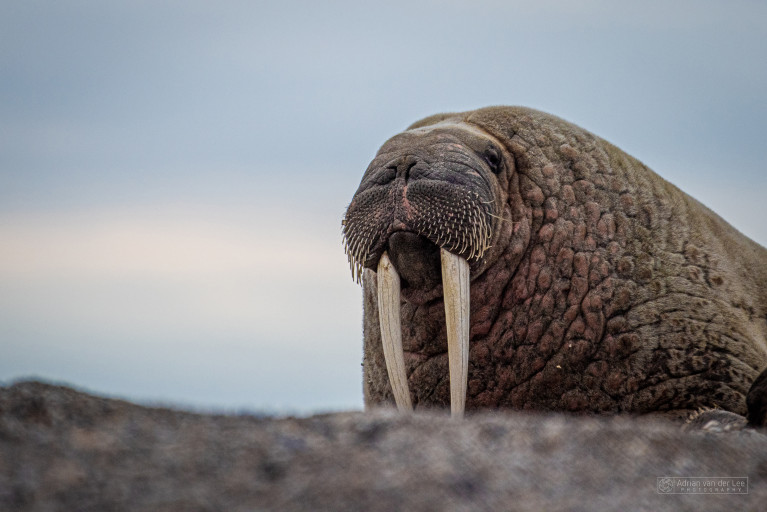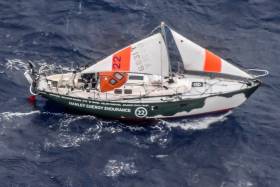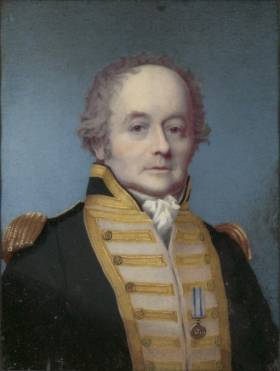Displaying items by tag: Poolbeg Y&BC Dublin
Lecture: “A Circumnavigation of Spitsbergen”
The next Glenua lecture, in aid of the RNLI, is to be held on Thursday 5 March (20.00) at the Poolbeg Yacht & Boat Club, Ringsend, Dublin.
Entry contribution of €5 in aid of the RNLI. I would appreciate your help in publicising the lecture in Afloat.
The subject of the lecture is: “A Circumnavigation of Spitsbergen”
The speaker is Photographer and Adventure sailor Adrian van der Lee.
During the summer of 2019, Adrian joins a Norwegian expedition on board the 70ft yacht Valiente to circumnavigate the spectacular 1,500km coast of Spitsbergen - the largest island of the Svalbard archipelago, deep in the Arctic Ocean. But there’s a problem: the ice charts show drift-ice blanketing the north and east of the archipelago, blocking their passage - so far this year circumnavigation has been impossible.
Glenua invite you to join Adrian as he presents his illustrated story with stunning photos of local wildlife and landscapes from this fascinating and remote region.
Lecture: “Transatlantic to the Caribbean-the Story of the ARC 2018”
The next Friends of Glenua lecture to be held on Thursday, 7th November takes place at the Poolbeg Yacht and Boat Club, in Ringsend, Dublin.
As previously reported on Afloat the same Dublin venue is where a series of other separate lectures will begin the following week.
As for the Glenua organised lecture as usual this will be in aid of the RNLI. This second lecture of the winter series is titled: Transatlantic to the Caribbean-the Story of the ARC 2018. This is to be presented by Dolores Murray.
The Atlantic Rally for Cruisers (ARC) is an annual transatlantic sailing event for cruiser yachts, held since 1986. It also includes a sailing competition for racers. The ARC is the largest trans-ocean sailing event in the world and regularly attracts over 200 boats of many different shapes and sizes. More than just a boat race, the ARC is about friendships made ashore in the two weeks of pre-departure activities in the Canaries Island and continued over the radio net at sea and at the various destinations on the way.
In her lecture Dolores will tell the story of how she became involved in the ARC in 2018, the preparations, training, trials and tribulations, and tradewinds, culminating in a successful transatlantic crossing.
Dolores is a sailing instructor who started her sail training in Croatia in 2001 and swiftly moved on to continue her training with GISC (Glenans Irish Sailing School) in 2001. Her sailing experience, prior to taking part in the ARC, was around the south-west coast of Ireland, an annual week in various Mediterranean areas and a delivery trip from Paimpol, Brittany in France to West Cork.
Lecture: “Man Overboard Recovery-Volvo Round Ireland 2018”
#dublinbay - An illustrated lecture: “Man Overboard Recovery-Volvo Round Ireland 2018" is to be presented next week in Dublin by John White and Kenneth Rumball.
This final lecture in the present series, organised by Friends of Glenua is to be held on Thursday 25 April at 8pm. The venue as usual will be held at the Poolbeg Yacht and Boat Club located in Ringsend on Pigeon House Road.
There will be an entry contribution of €5 in aid of the RNLI.
Background on lecture
One o'clock in the morning of 2nd of July 2018, 30+ knots of a northerly wind off the Blasket Islands, pitch black, wild rain and freezing temperatures, and the call goes out "Man Overboard". The man swept overboard was John White, one of a crew of seven on board Jedi, with Kenneth Rumball, James Gunn, John White, Philip Connor, Lorcan Tighe, Kylie McMillan, Diarmuid McLaughlin and skippered by Michael Boyd.
Fortunately, the very experienced and highly competitive skipper and crew, were well prepared for the 2018 Round Ireland Yacht Race. John was recovered quickly and efficiently and participated fully in the rest of the race.
Still there are lessons to be learned from their first-hand experience. John and Kenny will share these in their illustrated presentation which has already been received enthusiastically by fellow sailors in other sailing clubs. On the eve of a new sailing season, it’s a timely reminder that bad sailing conditions are a threat to the best of crews requiring thorough preparation in boat skills and modern technology.
Lecture: ‘Gregor’s Golden Globe Race 2018’
#lectures - A Glenua talk by Gregor McGuckin entitled: “Gregor’s Golden Globe Race 2018” Thursday 21 February at (20:00hrs) will take place at the Poolbeg Yacht & Boat Club, Ringsend, Dublin 4.
There will be an entry fee of €5 in aid of the RNLI.
In 2018 July, 50 years on from the original Golden Globe legendary race, Gregor McGuckin,set off as one of 18 competitors. In 1968, the sole finisher out of nine entries was Sir RobinKnox -Johnston. Gregor and his fellow competitors were attempting to replicate this race by sailing alone, non-stop around the world, only using technology from the 1960's. This means no GPS, satellite communications, water-makers and modern light-weight materials.
On September 21, after 86 days at sea, in the depths of winter in the Southern Ocean, he and a fellow competitor, Abhilash Tomy, were caught in a ferocious storm. This led to both of them losing their masts after their boats were rolled upside down. According to Gregor: “The whole boat got thrown sideways, everything went dark and I was lying on the roof and stuff lying everywhere”. Undaunted, he put together a jury rig and set out to rescue the badly injured Tomy.
In his illustrated presentation, Gregor will tell the story of the race up to that point and the dramatic multi-national rescue that was to follow.
Lecture: Dublin Bay - Captain Bligh and the Port
#Lectures - Friends of Glenua next week launch their 2018/19 winter lectures season, in aid of the RNLI, on Thursday 4 October at 8pm in the Poolbeg Yacht and Boat Club, Pigeon House Rd, Ringsend in Dublin.
Opening the season's first lecture (entry contribution of €5) will be: Dublin Bay - Captain Bligh and the Port.
The illustrated lecture is to be presented by Richard Nairn, the writer, sailor and environmentalist. He is the lead author of the acclaimed book: Dublin Bay – Nature and History, recently published. This talk is based on the book and will look at the career of Captain Bligh and how his work marked the start of the modern development of the port.
Captain William Bligh’s famous map of Dublin Bay was a key marine chart which accurately mapped the port and surrounds waters. It also identified the problems of the ‘bar’ and the need for engineering works to allow larger ships to enter the port.
Nairn was also a former director of BirdWatch Ireland. He currently provides environmental advice to the Dublin Port Company.

































































